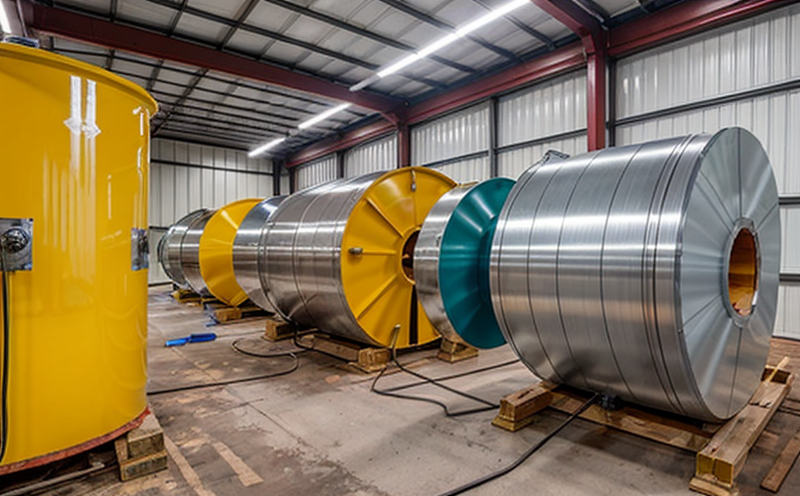ISO 2812-5 Chemical Resistance Testing of Paints & Varnishes
The ISO 2812 series is a comprehensive set of standards that govern various aspects of paint and varnish testing, with ISO 2812-5 specifically addressing chemical resistance tests. This service ensures that paints and varnishes used in marine environments can withstand the harsh conditions imposed by chemicals commonly encountered on ships. The test method is essential for ensuring the integrity and longevity of protective coatings against corrosion and degradation caused by chemical exposure.
The marine sector, particularly shipbuilding and maintenance, relies heavily on robust anti-corrosion measures to extend the lifespan of vessels. Paints and varnishes are critical components in this endeavor, as they provide a physical barrier that prevents direct contact between metals and corrosive chemicals like sea water, industrial cleaning agents, and lubricants.
ISO 2812-5 focuses on determining the resistance of paints and varnishes to chemical attack. The test involves immersing specimens in solutions containing various chemicals under controlled conditions. The primary objective is to assess how effectively these coatings resist dissolution or degradation by specific chemicals, which are representative of those found in marine environments.
For accurate results, specimen preparation follows stringent protocols outlined in the standard. Specimens must be cut from commercial paints and varnishes according to specified dimensions, then allowed to cure under controlled conditions before undergoing immersion tests. The solutions used contain a range of chemicals relevant to maritime applications, including seawater, acids, bases, solvents, and other aggressive substances.
The test apparatus typically consists of an autoclave or similar chamber that provides the necessary temperature control for accurate simulation of real-world scenarios. Specimens are immersed in the chemical solutions, and the extent of degradation is visually inspected at specified intervals to determine resistance levels.
Understanding the results from ISO 2812-5 tests is vital for quality managers and R&D engineers as it informs decisions on material selection and formulation adjustments. Compliance officers can ensure that products meet regulatory requirements while also enhancing product performance in challenging environments.
The test methodology not only aids in improving paint durability but also contributes to environmental sustainability by minimizing the need for frequent repainting or replacement, thus reducing waste generation. For procurement departments, this service ensures they source high-quality materials that consistently perform under demanding conditions, ultimately saving costs associated with premature failure and maintenance downtime.
Implementing ISO 2812-5 in a laboratory setting requires specialized facilities capable of simulating the rigors faced by coatings in marine applications. This includes controlled temperature chambers for curing specimens and precise measurement instruments for quantifying changes in thickness or adhesion post-exposure.
| Chemical | Description | Concentration (%) | Duration (hours) |
|---|---|---|---|
| Seawater | Simulates the primary corrosive agent in marine environments. | — | 48 hours |
| Sodium Hydroxide (NaOH) | A basic solution used to simulate alkaline cleaning agents. | 2.0 | 24 hours |
| Hydrochloric Acid (HCl) | Represents common acidic substances found in industrial settings near ports. | 3.5 | 168 hours |
| Toluene | An organic solvent often used in paint formulations. | 2.0 | 7 days |
The results from these tests are critical for ensuring that paints and varnishes not only meet industry standards but also perform reliably in the field. By adhering to ISO 2812-5 guidelines, manufacturers can develop coatings that provide enhanced protection against chemical attack, thereby extending the life of marine equipment and contributing to more sustainable operations.
Applied Standards
- ISO 2812-5:2019 – This standard outlines the procedure for determining the chemical resistance of paints and varnishes. It specifies the types of chemicals to be used, test durations, and evaluation criteria.
- ASTM D3646 – An alternative method that also evaluates paint resistance but focuses more on salt spray testing rather than chemical immersion.
Customer Impact and Satisfaction
- Increased Product Durability: By identifying the most resistant paints and varnishes, customers can expect longer-lasting coatings that require less maintenance.
- Enhanced Reputation: Compliance with ISO 2812-5 demonstrates a commitment to quality and reliability, boosting customer confidence in the products offered.
International Acceptance and Recognition
- The standard is widely recognized by regulatory bodies worldwide, ensuring that tests conducted meet global standards for chemical resistance.
- Countries like the United States, Europe, and Japan have adopted ISO 2812-5 as a benchmark for evaluating paint performance in marine applications.





